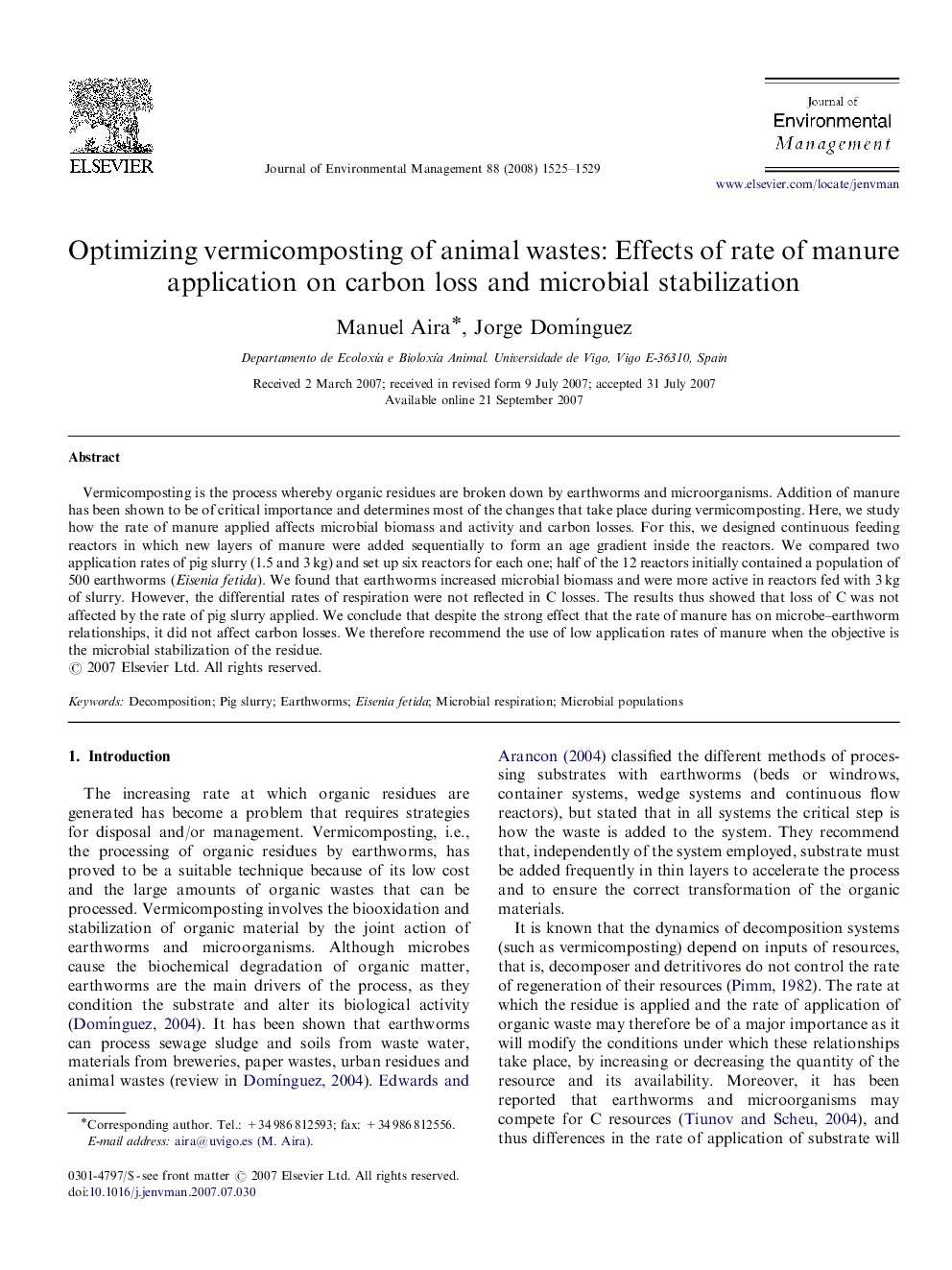| Article ID | Journal | Published Year | Pages | File Type |
|---|---|---|---|---|
| 1058345 | Journal of Environmental Management | 2008 | 5 Pages |
Vermicomposting is the process whereby organic residues are broken down by earthworms and microorganisms. Addition of manure has been shown to be of critical importance and determines most of the changes that take place during vermicomposting. Here, we study how the rate of manure applied affects microbial biomass and activity and carbon losses. For this, we designed continuous feeding reactors in which new layers of manure were added sequentially to form an age gradient inside the reactors. We compared two application rates of pig slurry (1.5 and 3 kg) and set up six reactors for each one; half of the 12 reactors initially contained a population of 500 earthworms (Eisenia fetida). We found that earthworms increased microbial biomass and were more active in reactors fed with 3 kg of slurry. However, the differential rates of respiration were not reflected in C losses. The results thus showed that loss of C was not affected by the rate of pig slurry applied. We conclude that despite the strong effect that the rate of manure has on microbe–earthworm relationships, it did not affect carbon losses. We therefore recommend the use of low application rates of manure when the objective is the microbial stabilization of the residue.
